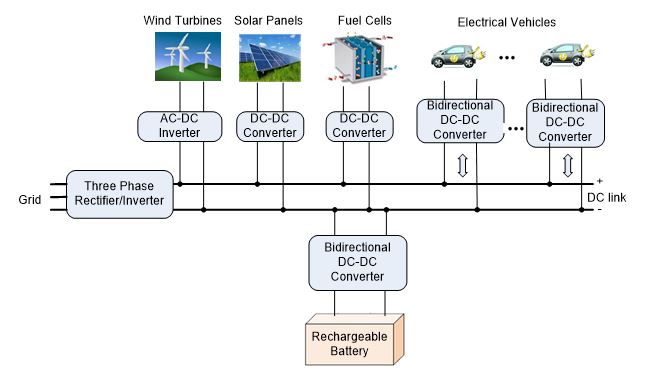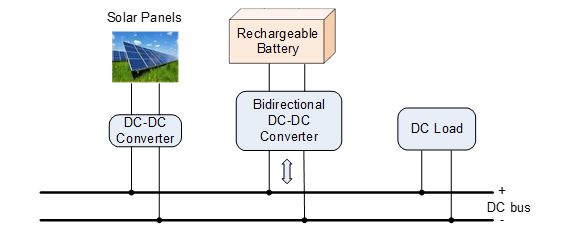Experiment 10: Microgrid
Introduction
A microgrid is a group of interconnected loads and distributed energy sources as a single controllable entity with respect to the grid, used for power generation and energy storage. A microgrid is self-sustaining and can be operated in grid mode, or island mode where the system is disconnected from the main grid. Their applications range from supplying a few hundred kilowatts to several hundred megawatts. Microgrid enables service providers and consumers to eliminate dependency on centralized energy generation. Because of their cost effectiveness, reliability, ease of implementation and integration of multiple sources of power generation methods, microgrid is a very fast-growing segment of energy source.
Solar photovoltaic based microgrids possess additional advantages such as infinite energy sources, low maintenance costs, and most of all, their zero carbon emission characteristics. Solar microgrids have been utilized extensively to augment grid power (Golsorkhi et al. 2017; Mahmood et al. 2014; Philip et al. 2016).
Figure 1 shows the structure of a DC microgrid. There are several power sources including wind turbines, solar panels and fuel cells. Wind turbines are connected to the DC grid through an AC-DC converter. Solar panels and fuel cells are connected to the DC grid through DC-DC converters. The bidirectional converter is an interface between rechargeable battery and the grid. When extra energy is available from the battery, the battery is discharged to send the energy to the grid. When extra energy is available from the grid, it is used to charge the battery. The rechargeable battery is either standalone or in electric vehicles.

Figure 1. A DC microgrid
Learning Objective
- Understand the power sources and loads in a microgrid.
- Observe the input and output power.
Materials and Equipment
- Solar panels
- wind turbines
- DC-DC converters
- AC-DC inverter
- rechargeable battery
Procedure
(A) Block Diagram for MicroGrid
-
Make connections for the block diagram of a DC microgrid in Figure 1. The DC microgrid has power sources of solar panels, wind turbines, and fuel cells. The loads include electric vehicles and rechargeable battery.
(B) Build and test a solar powered DC microgrid.
- Use the provided blocks of solar panels, MPPT control, DC-DC converter, bidirectional DC-DC converter, rechargeable battery and DC loads to build a solar powered DC microgrid in Figure 2
- Give the irradiation value equal to 1000 W/m2. Operate the solar microgrid. Observe and determine values of the output power from the solar panel, the varying load, and the output power from the battery for each of the time interval 0-0.05s, 0.05-0.1s, 0.1-0.2s, 0.2-0.3s, 0.3-0.4s, 0.4-0.5s. Explain the waveform in details for each time interval.
- Change the irradiation value to 800 W/m2. Operate the solar microgrid. Observe and determine values of the output power from the solar panel, the varying load, and the output power from the battery for each of the time interval 0-0.05s, 0.05-0.1s, 0.1-0.2s, 0.2-0.3s, 0.3-0.4s, 0.4-0.5s. Explain the waveform in details for each time interval. Compare the difference with the waveforms when the irradiation is 1000 W/m2.

Figure 2. Solar powered DC microgrid


